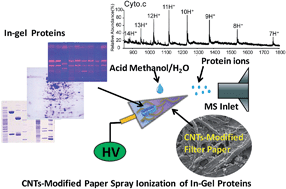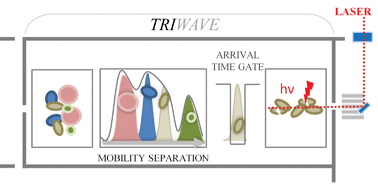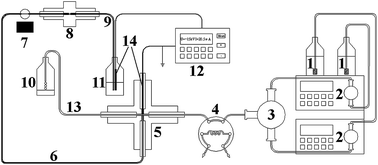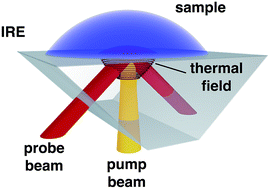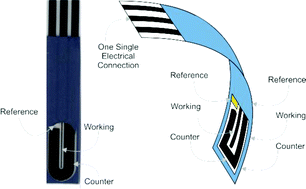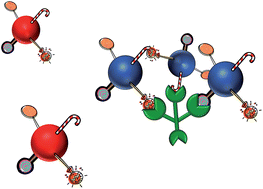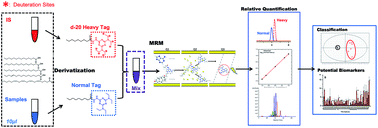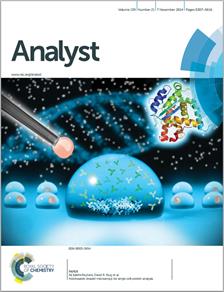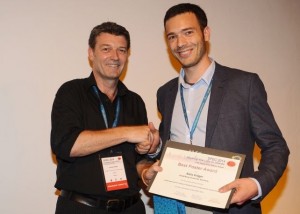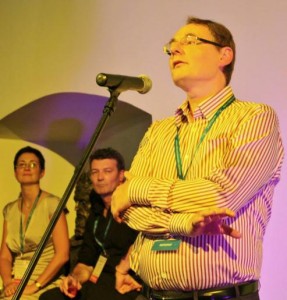Take a look at our most recent HOT Analyst articles, these are now free to access for the next few weeks!
Propofol Detection and Quantification in Human Blood: The Promise of Feedback Controlled, Closed-loop Anesthesia
Francine Kivlehan, Edward Chaum and Erno Lindner
Analyst, 2015, Advance Article
DOI: 10.1039/C4AN01483A
Direct Analysis of in-Gel Proteins by Carbon Nanotubes-Modified Paper Spray Ambient Mass Spectrometry
Feifei Han, Yuhan Yang, Jin Ouyang and Na Na
Analyst, 2015, Advance Article
DOI: 10.1039/C4AN01688B
Responsive Ionic Liquid-Polymer 2D Photonic Crystal Gas Sensors
Natasha L. Smith, Zhenmin Hong and Sanford A. Asher
Analyst, 2014, 139, 6379-6386
DOI: 10.1039/C4AN01485E
Label-Free Fluorescence Detection of DNA Methylation and Methyltransferase Activity Based on Restriction Endonuclease HpaII and Exonuclease III
Chunyan Gao, Henan Li, Yuanjian Liu, Wei Wei, Yuanjian Zhang and Songqin Liu
Analyst, 2014, 139, 6387-6392
DOI: 10.1039/C4AN01359J
Autocatalytic Amplified Detection of DNA Based on CdSe Quantum Dots/Folic Acid Electrochemiluminescence Energy Transfer System
Guifen Jie, Yingqiang Qin, Qingmin Meng and Jialin Wang
Analyst, 2015, Advance Article
DOI: 10.1039/C4AN01465K
Carbon nanotube/gold nanoparticle composite–coated membrane as a facile plasmon–enhanced interface for sensitive SERS sensing
Kun Zhang, Ji Ji, Xiaoni Fang, Ling Yan and Baohong Liu
Analyst, 2015, Advance Article
DOI: 10.1039/C4AN01473A
UV Photodissociation of trapped ions following ion mobility separation in a Q-ToF mass spectrometer
Bruno Bellina, Jeffery. M. Brown, Jakub Ujma, Paul Murray, Kevin Giles, Michael Morris, Isabelle Compagnon and Perdita. E. Barran
Analyst, 2014, 139, 6348-6351
DOI: 10.1039/C4AN01656D
Oligopeptide-heavy metal interaction monitoring by hybrid gold nanoparticles based assay
Jane Politi, Jolanda Spadavecchia, Mario Iodice and Luca de Stefano
Analyst, 2015, Advance Article
DOI: 10.1039/C4AN01491J
Hydrazinonicotinic acid as a novel matrix for highly sensitive and selective MALDI-MS analysis of oligosaccharides
Jing Jiao, Ying Zhang, Pengyuan Yang and Haojie Lu
Analyst, 2015, Advance Article
DOI: 10.1039/C4AN01659A
Development of Transmission Raman Spectroscopy towards the In Line, High Throughput and Non-Destructive Quantitative Analysis of Pharmaceutical Solid Oral Dose
Julia A. Griffen, Andrew W. Owen and Pavel Matousek
Analyst, 2015, Advance Article
DOI: 10.1039/C4AN01798F
An adaptable stage perfusion incubator for the controlled cultivation of C2C12 myoblast cells
Felix Kurth, Alfredo Franco-Obregón, Christoph A. Bärtschi and Petra. S. Dittrich
Analyst, 2015, Advance Article
DOI: 10.1039/C4AN01758G
Surface Charge, Electroosmotic Flow and DNA Extension in Chemically Modified Thermoplastic Nanoslits and Nanochannels
Franklin I. Uba, Swathi R. Pullagurla, Nichanun Sirasunthorn, Jiahao Wu, Sunggook Park, Rattikan Chantiwas, Yoon-Kyoung Cho, Heungjoo Shin and Steven A. Soper
Analyst, 2015, Advance Article
DOI: 10.1039/C4AN01439A
A Pressure-Driven Capillary Electrophoretic System with Injection Valve Sampling
Chao Han, Jiannan Sun, Jinhua Liu, Heyong Cheng and Yuanchao Wang
Analyst, 2015, Advance Article
DOI: 10.1039/C4AN01315H
Fluorescence polarization immunoassays for monitoring nucleoside triphosphate diphosphohydrolase (NTPDase) activity
Amelie Fiene, Younis Baqi, Joanna Lecka, Jean Sévigny and Christa E. Müller
Analyst, 2015, Advance Article
DOI: 10.1039/C4AN01694G
The “V-junction”: a novel structure for high-speed generation of bespoke droplet flows
Yun Ding, Xavier Casadevall i Solvas and Andrew deMello
Analyst, 2015, Advance Article
DOI: 10.1039/C4AN01730G
Make PyrophosphateVisible: The First Precipitable and Real-time Fluorescent Sensor for Pyrophosphate in Aqueous Solution
Shu-Yan Jiao, Kun Li, Xin Wang, Zeng Huang, Lin Pu and Xiao-Qi Yu
Analyst, 2015, Advance Article
DOI: 10.1039/C4AN01615G
Constructing a FRET-based molecular chemodosimeter for cysteine over homocysteine and glutathione by naphthalimide and phenazine derivatives
Lin Yang, Weisong Qu, Xiao Zhang, Yandi Hang and Jianli Hua
Analyst, 2015, Advance Article
DOI: 10.1039/C4AN01732C
High pH sensing with water-soluble porpholactone derivatives and their incorporation into a Nafion® optode membrane
Jill L. Worlinsky, Steven Halepas, Masoud Ghandehari, Gamal Khalil and Christian Brückner
Analyst, 2015, Advance Article
DOI: 10.1039/C4AN01462F
Photothermal deflectometry enhanced by total internal reflection enables non-invasive glucose monitoring in human epidermis
M. A. Pleitez, O. Hertzberg, A. Bauer, M. Seeger, T. Lieblein, H. v. Lilienfeld-Toal and W. Mäntele
Analyst, 2015, Advance Article
DOI: 10.1039/C4AN01185F
Exploring Copper Nanostructures as highly uniform and reproducible substrates for Plasmon-enhanced Fluorescence
D. Volpati, E. R. Spada, C. C. Plá Cid, M. L. Sartorelli, R. F. Aroca and C. J. L. Constantino
Analyst, 2015, Advance Article
DOI: 10.1039/C4AN00889H


